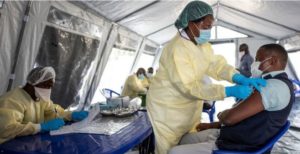New global taskforce launched to end child sex tourism

LONDON – A new global Taskforce launched in London aims to tackle the rapid acceleration of sexual exploitation of children in travel and tourism.
Eight eminent leaders from the travel industry, the United Nations, Governments and NGOs, under the leadership of Dr. Maalla M’jid Former Special Rapporteur on the sale of children, child prostitution and child pornography, will re-think approaches to a crime that has, to date, outpaced every attempt to respond. The sexual exploitation of children in travel and tourism is now a phenomenon of global dimensions, and as Dr. Maalla M’jid states, a phenomenon that “seriously harms countless children around the world, often with irreparable consequences.”
The Taskforce will oversee the ECPAT International-initiated Global Study on the Sexual Exploitation of Children in Travel and Tourism, the first of its kind, funded by the Dutch Government.
“The global study, which will involve many actors at international, regional and national level – including children – aims to provide a global and updated picture of sexual exploitation of children in travel and tourism,” says Dr. Najat Maalla M’jid.
“It will analyze its emerging trends and its global dimensions, highlighting the progress made and the remaining challenges since the last World Congress on the Sexual Exploitation of Children in 2008, in Rio. The Global Study aims to provide a set of concrete recommendations to improve government, non-government and private-sector responses to protect all children, without discrimination, from this crime.”
Carol Smolenski, Executive Director of ECPAT-USA, the US branch of ECPAT said, “This is such a fantastic, positive development, to grapple with an international crime that crosses all borders and affects thousands of children. Americans are some of the offenders. This global study will describe the steps we have to take to put an end to it.”
Ernie Allen, former President and CEO of the International Centre for Missing and Exploited Children (ICMEC), emphasizes that, despite every effort, the problem persists and is constantly evolving. “We have seen enormous progress in the fight against child sex tourism. Yet, the problem continues and is changing thanks to new technologies and a global lack of data sharing and coordination.”
Offenders are increasingly adept at using the travel and tourism industries as a route to child exploitation and new developments have heightened the dangers for children: the rise of the Internet and greater access to international travel have expanded ‘demand.’ At the same time, social and economic disparities, poverty and lack of education – combined with weak child protection systems – have fueled the ‘supply’ of children.
Dr. Rifai, Secretary General of the World Tourism Organization: “After reaching a historic milestone in 2012 – one billion people crossing international borders in a single year – tourism continues to gain momentum against all odds. In 2013, the sector surpassed expectations with a 5% growth, reinforcing its position as one of the most resilient and fastest growing economic sectors. Tourism represents today 9% of global GDP, 30% of the world’s export services and one in every 11 jobs worldwide. These are encouraging facts, especially in the context of a challenging global economy. But we cannot ignore that it is also a serious responsibility. With the economic growth, job creation and development opportunities that tourism brings, comes the challenge of its possible detrimental impacts on the communities and the environment. This is particularly true for the more vulnerable groups of society such as children and youth in those cases when the industry’s facilities are used for nefarious purposes such as exploitation.”
Responses are hampered by a failure of collective action, meager resources and a chronic lack of robust evidence and comparable data that, taken together, allow offenders to commit their crimes in the shadows, and often with impunity. The Taskforce aims to pull this crime from the shadows into the light, guiding an authoritative global study on its scale and nature, assessing what works and advocating for the necessary changes. It aims to re-assess current approaches that are failing to protect children, and to ensure that governments are held accountable when they fail to act.
Ernie Allen adds “This study will identify the gaps and challenges that remain, and enable world leaders to chart a bold, new course to eradicate child sexual exploitation.”
Milena Grillo, Executive Director of Fundación Paniamor in Costa Rica and the ECPAT Representative on the Taskforce concludes: “It is ECPAT’s conviction that countries of origin and destination need to work together to put a halt on the growing crime of commercial sexual exploitation of children and adolescents linked to travel and tourism. The Global Study aims to present these countries and other interested parties at global and regional levels – mainly the tourism industry, international cooperation agencies and the NGO community – with state-of-the art, reliable information to inform a multi-country and sustained commitment to ensure that this exploitation is not only punishable, but socially unacceptable. We owe this to the children of the world.”
Corinne Dettmeijer-Vermeulen, National Rapporteur on Trafficking in Human Beings and Sexual Violence against Children, The Netherlands, says that “The Taskforce will do its best to create new ways and synergies that stimulate stakeholders to work together and to contribute in decreasing the sexual exploitation of children worldwide.”
“We are becoming increasingly expert at engaging across sectors to gather the hard data to support our global effort to end this grand challenge that threatens the world’s children,” says Marilyn Carlson Nelson, former CEO and Chairman of Carlson. “Together we will do what no one of us can do alone.”
The eight members of the Taskforce to guide the Global Study are:
• Dr. Najat Maalla M’jid CHAIR | Former Special Rapporteur on the sale of children, child prostitution and child pornography
• Marilyn Carlson Nelson MEMBER | Former Chair and Chief Executive Officer of Carlson, a global travel and hospitality company, headquartered in Minneapolis, USA
• Corinne Dettmeijer-Vermeulen MEMBER | National Rapporteur on Trafficking in Human Beings and Sexual Violence against Children, The Netherlands
• Jean-Cyril Spinetta MEMBER | Former Chief Executive Officer of Air France-KLM SA
• Ernie Allen MEMBER | Former President and CEO of the International Centre for Missing & Exploited Children (ICMEC), USA
• Dr. Benyam Dawit Mezmur MEMBER | Vice-Chairperson of the Committee on the Rights of the Child and Chairperson of the African Committee of Experts on the Rights and Welfare of the Child (ACERWC)
• Dr. Taleb Rifai MEMBER | Secretary-General of the World Tourism Organization (UNWTO) based in Madrid
• Milena Grillo ECPAT REPRESENTATIVE | Executive Director of Fundación Paniamor, Costa Rica
ECPAT-USA is the leading anti-trafficking policy organization in the United States. ECPAT-USA belongs to an international network of organizations in 73 countries, all working to end the commercial sexual exploitation of children. Source : etn.travel
Nov. 8, 2014















